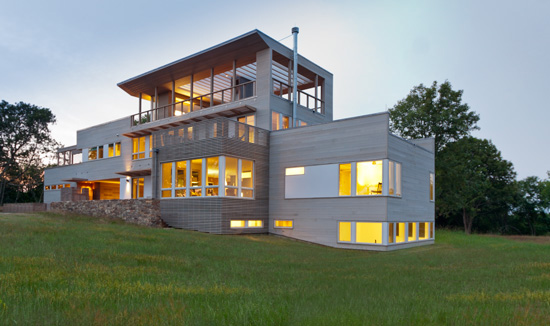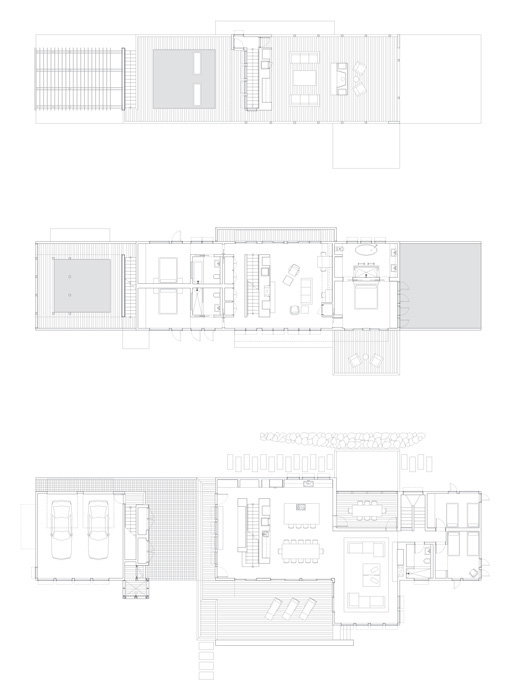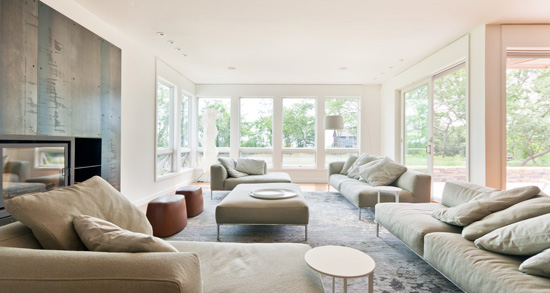Sustainability, Modular Design, and BIM
The Recent Evolution of Design and Construction
Sometimes change is quick and dramatic, and other times it is a slow process over years or decades. In the case of the way buildings are being designed and constructed, it is fair to say that both speeds are at work. For many currently practicing design professionals, their careers began based on very traditional design, drawing, and construction administration practices that were grounded in long-standing manual drafting and documentation procedures. Many have held on to those traditions and continue to practice in the manner that is familiar to them. Other design professionals began their careers with a full complement of computerized informational tools available that allowed them to pursue designs in a style characterized more by experimentation than by tradition. Hence, within a generation or two, the ways of thinking, the tools, and the processes related to design have changed significantly.
It is worth pointing out that traditional 20th-century practices were built on a separation of design from construction. This was formalized by separate contracts between the building owner and the architect and between the owner and the contractor. In this typical design-bid-construct process, everyone had a defined but separate role to play in the interest of producing the best outcome for the building owner. Unfortunately, that also meant that the architect and general contractor didn’t commonly meet or communicate until after bids were opened, and then often entered into a relationship that could as easily be adversarial as not. It also typically meant that the design team had little or no communication with subcontractors or suppliers other than preparing specifications for the applicable trades, reviewing their shop drawings and submittals, and occasional presence at job-site meetings.
In the interest of seeking to streamline the construction process, reduce potential delays, control costs better, and improve communications, some building owners have pushed for a more coordinated and integrated process for delivering projects. The American Institute of Architects (AIA) has responded to this need with a formal position on “project delivery,” which is fundamentally the process by which a project successfully moves through all aspects of design and construction. This statement reflects the need to cross over traditionally separate roles and responsibilities and focus on collaboration and sharing of information in the interest of better project outcomes. The statement goes on to say that “The AIA also believes that the architect is most qualified to lead the design of a project and can lead a project team throughout the project delivery process.”
Sustainability as Part of Mainstream Design
Within this context of increased collaboration, green and sustainable building design, construction, and operation has flourished. It wasn’t that long ago that sustainable building issues like energy efficiency, indoor air quality, and recycling were specialty concepts that were applicable to a select group of building projects. That has changed notably and has been cited extensively as an enduring change to the way buildings are looked at by virtually everyone, including owners, users, designers, contractors, suppliers, manufacturers, and regulators. The continued rise of building rating systems, such as the LEED program of the U.S. Green Building Council (USGBC), the Green Globes program of the Green Building Initiative, and the ENERGY STAR® program for buildings of the U.S. Environmental Protection Agency (EPA), have certainly contributed significantly to the thinking and perception of building performance. Also, increasingly stringent energy codes have been influenced by the recognition of the numerous negative impacts of buildings that do not use energy effectively. Hence we find ourselves today with a code-required minimum level of sustainable design needed for every project, and in many cases a higher level being sought or required by building owners and users. The media characterizes a notable shift like this as “going mainstream,” meaning that it is no longer a special or fringe group that is engaged, but the vast majority of the people.
Creating sustainable designs starts with a philosophy that the definition of a well-designed building automatically includes the attributes that make up sustainability. These include environmentally sensitive site design, water conservation, optimization of energy use, attention to life-cycle assessment of materials, and indoor environmental quality. It also means taking a personal stand that all design work undertaken will meet specific performance standards, particularly in regards to reducing the use of fossil fuels. The not-for-profit organization Architecture 2030 has issued the 2030 Challenge for all architects to work toward designing new and existing buildings with zero fossil fuel reliance by the year 2030. As a corollary to that, the AIA has invited all architecture and engineering firms to personally commit to the AIA 2030 Challenge, whereby firm principals agree to track and report their progress on all of their projects each year toward meeting the 2030 Challenge goals. These programs have been signed by a substantial number of design firms.
Manufactured Construction Comes of Age
In the years following the end of World War II, a surge in the need for housing and other buildings in the United States helped to proliferate construction that was efficiently prefabricated in a factory-like setting and then shipped to a building site. Among them were developments where a limited number of standardized modules were arranged in different formations and finishes to give the appearance of personalization with very little actually existing. While this may still be a pervasive image of modular construction to some people, the reality is that a lot of growth and change has occurred in this arena. In his book Prefab Architecture: A Guide to Modular Design and Construction (John Wiley & Sons, Inc. 2010), author Ryan E. Smith chronicles the history of manufactured building from the Industrial Revolution to the present in the context of environment, organization, and technology. He identifies a number of 20th-century examples of work and trends that have contributed to current notions of manufactured construction, and includes dozens of recent examples of prefab projects by contemporary architects and fabricators, including KieranTimberlake, SHoP Architects, Office dA, Michelle Kaufmann, and many others. It becomes abundantly clear that while standardized construction and fabrication is achieved, great design flexibility is also gained.



Images courtesy of Resolution: 4 Architecture
Modularized, pre-manufactured buildings have grown in usage and popularity due to their ability to better link design, fabrication, and construction and improve quality control in all cases.
Separate work on this topic is presented by Stephen Kieran and James Timberlake in their 2004 book, refabricating ARCHITECTURE (McGraw Hill, 2004). Their focus is less on standard products and more on the ability to engage in what they term “mass customization.” Using aircraft, automotive, and computer industries as examples, they illustrate how products in those arenas are being created from pre-designed, pre-manufactured parts or systems that are assembled into the final total product. Because of built-in variability and options, each resulting product can be truly customized to add or delete features, include optional components, or select variable attributes, such as color and finishes. A particularly good example is the Dell Inc. computer company that became well-known for its ability to let customers “build” their own computer to meet their needs. Providing this level of customization to a mass market is the basis of the “mass customization” term.
Kieran and Timberlake go on to apply these ideas to buildings by demonstrating, through their own architectural work and the work of others, that discreet building modules can be designed in a manner to allow them to fit together in various configurations to suit specific site and project conditions. Further, modules can be fully customized in terms of components and details to suit the particular design needs of a project, an owner, or a user. They point out that the benefit of this mass customization to architects is greater control of the total process of design and construction. That control is possible since the architect can be dealing directly with a fabricator, not a general contractor, in many cases. This gives architects the opportunity to assume a new, modernized “master builder” role that relies on coordination and collaboration with more professionals than in the traditional 20th-century model. Looking more closely at the process, they point out that manufacturing for buildings is no longer about an assembly line of individual parts to create repetitive designs. Rather, individual components, modules, or blocks are produced off-site according to the design drawings and specifications in a weather-protected manufacturing facility. By breaking out specific, discreet portions, simultaneous fabrication can occur at several different locations. Then, according to a coordinated time schedule, the completed, customized modules can be shipped to the construction site for installation and final assembly into the building as appropriate. Overall, they demonstrate that this process allows for greater quality control, reduced time schedules, and cost savings. As such, it is also a more collaborative and sustainable way to produce buildings.









